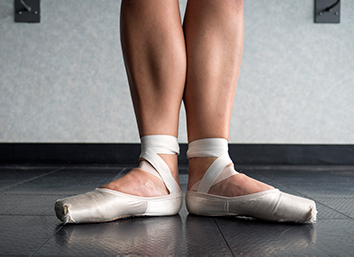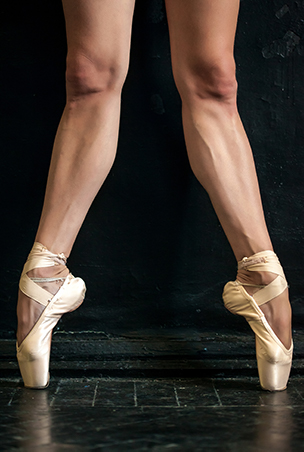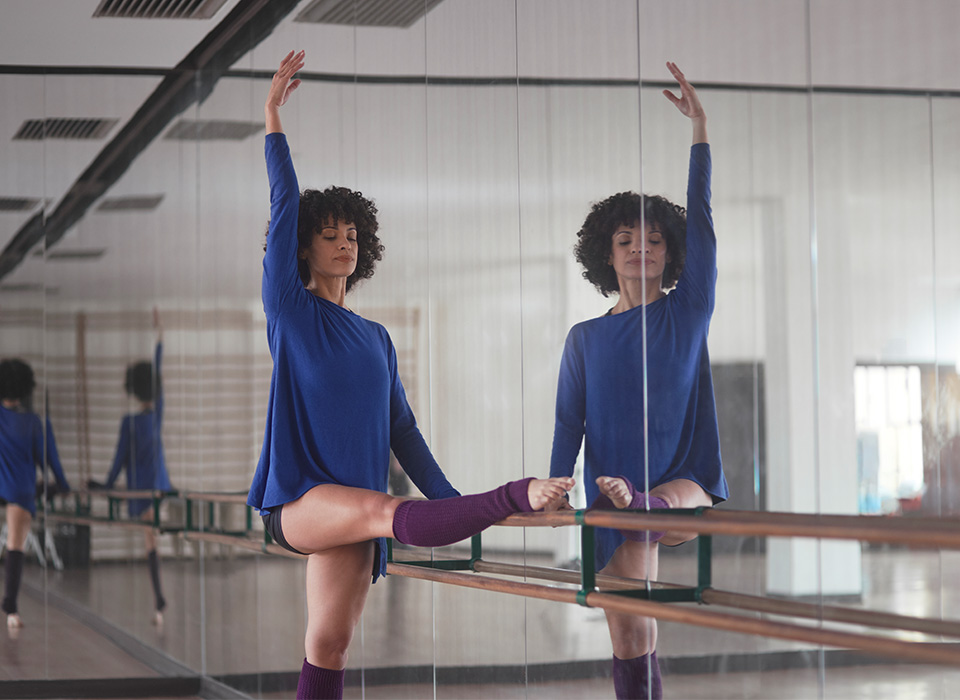While dance may look effortless it requires the same training and strength as other sports. This effort means dancers are susceptible to injury just like other athletes. If you are a dancer or parent of a dancer, here are some common injuries and injury prevention tips to be aware of.
Common Injuries
Overuse injuries
Overuse injuries are the most common among dancers because of the repetitive movements both in routines and training. These injuries occur most frequently in the lower part of the leg, in the ankle, foot, and toe joints.
These types of injuries are prevented by strengthening exercises for the supporting muscles, as well as proper rest and nutrition.
Sprains

Sprains occur when a muscle or ligament is overstretched or twisted. Dance requires immense flexibility, leaving sprains a common injury for dancers. Often, sprains in dancers are caused by forcing flexibility in “turned-out” positions.
Turn-out is the external rotation of the hip joints, visible in the foot placement of heels forward and toes back and kneecaps facing outward. Turn-out is one of the foundational elements of classical ballet, making it essential to master correctly. Injuries arise when dancers force turn-out by planting their feet in a 180-degree position, rather than rotating at the hip joint. A smaller yet strong turn-out is better than a forced turn-out.
Sprains happen commonly in the ankle, hip, and lower back or dancers.
Broken bones
The most frequent broken bones in dancers are broken ankles and broken toes. Dancers that do ballet en pointe, or on the tips of their toes rather than the balls of their feet, may be at risk for broken toes. Broken toes en pointe can be prevented by ensuring that you do not begin dancing in pointe shoes without approval from a trained professional dancer as well as being fitted by someone with training. Broken ankles are prevented by strengthening the ankle with warm-up exercises.
Achilles tendonitis
Achilles tendonitis, inflammation of the tendon, is another common injury for dancers. The Achilles tendon is the prime mover of the foot and ankle and used constantly while dancing. Without proper strength conditioning, the Achilles can easily develop tendonitis or even rupture because of the intense usage.
Dancers can prevent tendonitis by doing strengthening exercises for their ankle and warming up properly before dancing.
Hip labral tear
A hip labral tear occurs from repetitive movements, often long distance running, but in the case of dancers, repeatedly “turning out” their hips or performing a battement exercise. It can also occur from trauma of dislocation or sudden twisting. Hip labral tears are best prevented by rest, as this injury often occurs from repetitive motions. Cross training can also be beneficial for preventing hip labral tears, as cross training helps to strengthen the supporting muscles.
Jumper’s knee or Patellofemoral Pain Syndrome
Patellofemoral pain syndrome occurs when the kneecap doesn’t move along the correct path within the knee, so it doesn’t “track” properly. Much like a train, if the kneecap doesn’t move along the tracks it cannot continue to run or move properly. This injury occurs most often because of a muscle strength imbalance, when the quadriceps are weaker than the calves and hamstrings. This injury can be prevented by muscle strengthening of all of the leg, hip, and glute muscles, and proper stretching before performing rigorous dancing.
Frequently asked questions
Am I at risk for a torn ACL?
With any sport there is a risk of injuring your ACL, however, dancers are among the lowest risk of this particular injury. This lowered risk is because dance training involves intense jumping and quick direction shifting from a young age, building muscle control of the ACL.
If I’ve sprained my ankle in the past, can I sprain it again?
Yes. Unlike bones, that often grow back stronger, once a muscle and/or ligament is torn, it will never fully return to pre-injury condition. You are at a higher risk of re-spraining it. Building strength back in the torn muscle and supporting muscles will help prevent a recurrence of a sprain.
How do I know if my pain is due to an injury? How do I know if I’m injured or just sore?
If you are experiencing pain that is waking you up at night and/or preventing sleep, present at the start of an activity and/or pain that increases with activity, pain that is causing you to shift your weight or compensate for pain, it is likely that you are injured, and not just sore.
Injury Prevention
Ensuring that you complete a sufficient warm-up routine, to prepare every muscle in your body, is one of the biggest factors in preventing an injury while dancing. If your dance class doesn’t not include a comprehensive warm-up routine, be sure to complete your own warm-up before dancing.
Cross-training (doing other workouts besides dance) is great way to prevent injury by strengthening muscles.
Proper nutrition as well as adequate rest and sleep are other vital ways to prevent injury in dancers. Just as not sleeping the night before a test can cause one to make mistakes, unrest in a dancer can cause them to accidently injury themselves. Proper nutrition ensures that dancers muscles are receiving the nutrients they need to perform their duties.
Other factors to consider when dancing
Sometimes injuries can stem from factors outside of our body. With dance there are two big ones: improper flooring and ill-filling shoes.
Improper flooring

Dancers can develop pain from shin splints, usually caused by dancing on floors that are not spring-boarded. Spring-boarded floors provide extra give when dancers jump and move around. Almost all dance studios come equipped with this special flooring. If you or your dancer are having pain from shin splints, you may want to check with your studio’s owner or consider adding spring-boards to your home studio.
Ill-fitting shoes
Ill-fitting dance shoes can also cause injuries to dancers. Dance shoes must fit properly in order to provide the support and stability that the foot and ankle need; without that stability, you are more likely to sustain an injury. If you feel that your shoes do not fit properly, ask your teacher or trained fitter to help you find better shoes.
